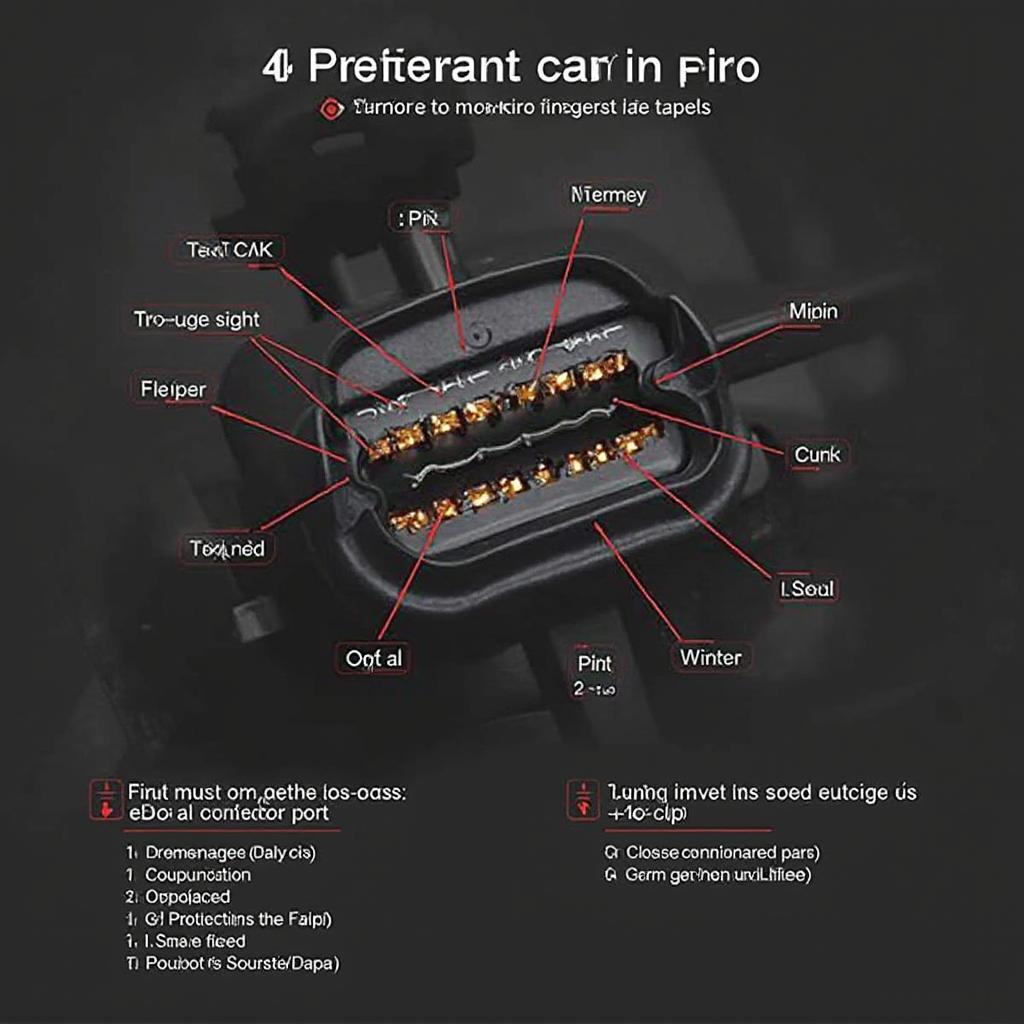Understanding the OBD2 protocol is crucial for anyone who owns a car, works in the automotive industry, or is simply interested in car diagnostics. This protocol, standardized in 1996 in the United States, allows you to access a treasure trove of information about your vehicle’s performance and health. It’s the language your car speaks, and learning it can empower you to diagnose issues, monitor performance, and potentially save money on repairs.
What is the OBD2 Protocol?
OBD2, short for On-Board Diagnostics, Second Generation, is a standardized system that allows external devices, like OBD2 scanners, to communicate with a vehicle’s computer. This protocol defines a set of standardized diagnostic trouble codes (DTCs), commands, and data parameters that enable consistent communication and data interpretation across different makes and models of vehicles. Before OBD2, each manufacturer had its own proprietary diagnostic system, making it challenging for mechanics and car owners to access diagnostic information.
How Does the OBD2 Protocol Work?
The OBD2 protocol functions by establishing communication between the OBD2 scanner and the vehicle’s various electronic control units (ECUs). These ECUs monitor and control different systems within the car, from the engine and transmission to the airbags and anti-lock brakes. When a fault occurs in a system, the corresponding ECU generates a DTC and stores it in its memory. The OBD2 scanner then retrieves these DTCs along with other real-time data, allowing you to understand the nature of the problem. Think of it as your car sending out a distress signal, and the OBD2 scanner acting as a translator, deciphering the message for you.
Different Types of OBD2 Protocols
While OBD2 is a standardized system, several underlying communication protocols exist within it. These include ISO 9141-2, ISO 14230-4 (KWP2000), SAE J1850 PWM, SAE J1850 VPW, and CAN (Controller Area Network). obd2 protocol iso 9141 offers more insights on this specific protocol. Different car manufacturers use different protocols, and knowing the one used by your vehicle can be beneficial when selecting an OBD2 scanner. protocolo obd2 chevrolet can provide specifics on the protocols used by Chevrolet.
What Can You Do with the OBD2 Protocol?
Understanding the OBD2 protocol opens up a range of possibilities for car owners and professionals. You can:
- Diagnose trouble codes: Identify the root cause of check engine lights and other warning indicators.
- Monitor vehicle performance: Track parameters like speed, RPM, fuel consumption, and engine temperature in real-time.
- Customize vehicle settings: Some advanced scanners allow for adjustments to certain vehicle parameters.
- Conduct emissions testing: Verify if your vehicle meets emissions standards. mitsubishi pajero obd2 protocol can help if you own a Mitsubishi Pajero.
“Understanding the nuances of the OBD2 protocol allows mechanics to efficiently and accurately diagnose complex vehicle issues,” says John Smith, Senior Automotive Diagnostic Technician.
The Future of the OBD2 Protocol
The OBD2 protocol continues to evolve with advancements in automotive technology. Future iterations are expected to incorporate more sophisticated data parameters, faster communication speeds, and enhanced security features. obd2 protocol j2284-3 explains the newer standard. “The evolution of the OBD2 protocol is driving innovation in vehicle diagnostics and paving the way for a more connected and intelligent automotive future,” says Jane Doe, Automotive Systems Engineer.
Conclusion
Understanding the OBD2 protocol is essential in today’s automotive world. It empowers car owners and professionals to effectively diagnose and resolve vehicle issues, monitor performance, and stay ahead of potential problems. By learning this critical communication language, you gain valuable insights into the health and performance of your vehicle. obd2 protocol chevy malibu 98 might be useful for owners of this specific model.
FAQ
- What is the difference between OBD1 and OBD2?
- Can I use any OBD2 scanner on any car?
- How do I clear trouble codes using an OBD2 scanner?
- What does a pending code mean?
- Where can I find more information about specific OBD2 trouble codes?
- What is the cost of an OBD2 scanner?
- Can an OBD2 scanner damage my car?
Need support? Contact us via WhatsApp: +1(641)206-8880, Email: [email protected] or visit our office at 789 Elm Street, San Francisco, CA 94102, USA. We have a 24/7 customer service team.


